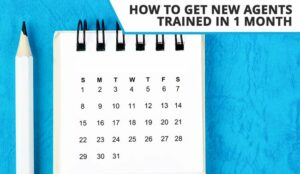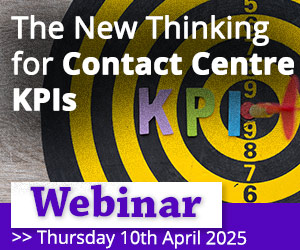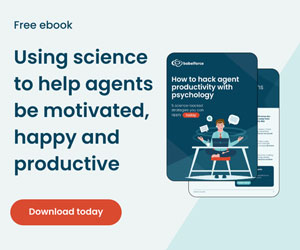Agent training can be tedious, time-consuming, and inefficient, can’t it? But it doesn’t have to be that way!
Our Editor Megan Jones spoke to Jeremy Watkin, Michel Stevens, Kim Ellis, and Sirisha Peters to find out what it really takes to deliver a fast, quality training programme in just one month.
Strip Back Your Training Programme to What You Really Need
Time-consuming training programmes often include modules that aren’t strictly urgent.
Here are some top tips and considerations to help you condense your current training programme:
Don’t Waste Time Training on Nuances Agents Might See Once a Year
Stop and think about what your agents really need to know, what the most common query types are, and what the minimum amount of information is that they need to get started.
For everything else, just make sure they know how to find the answer if they come across it, as Kim Ellis, Chief Learning Architect at Go Ginger Learning Solutions, says:
“Don’t waste time focusing on nuance calls that they might see once a year! This approach just slows down the process of getting them out on the floor.”
Assume Agents Will Be Able to Log Into and Navigate Your Systems
Training programmes are typically littered with obvious and nice-to-know agenda items, costing time that could be better spent elsewhere.
For example, teaching agents how to log into or navigate e-learning systems. You don’t need to spend time on basic things like that, so cut them out.
Skip the Overly Simple Cases That Will Be Handled in Self-Service
Don’t waste time going over simple queries that will be handled in self-service.

“Nowadays, when a customer calls in, it’s usually because they’ve already tried to solve the problem themselves and failed.
“When the simpler cases are being solved by automation, it leaves the complex, interesting ones for agents.
“Training, then, is no longer just about speed and ease; it’s about preparing people to handle complexity. An efficient training programme should reflect this!” – Michel Stevens, Customer Experience Master (CXM)
For advice on the ever increasing capabilities of self-service, read our article: 10 Changes Set to Redefine the Future of Self-Service
Rearrange Compliance Training and Corporate Inductions for a Later Date
Take a look at where the corporate induction for all employees features in your agent training programme.
Whilst necessary, these inductions are often lengthy, covering all matters of HR and company policy and only serve to slow down your contact centre training programme.
So instead of automatically including the company induction on Day 1 of agent training, look at whether it can be done at another time.
Apply the same logic to any compliance training and other time-consuming, less urgent modules too.
Look at Where AI Can Fast-Track Training and Support
There are also new possibilities with AI that can help fast-track your training programme, as Jeremy Watkin, Director of Customer Experience and Support at NumberBarn, shares:

“One thing I’m constantly watching for is how AI can help. For example, generating scripts and faster responses for agents to use in emails.
“We’ve experimented with some generative AI applications that analyse our knowledge base and formulate responses too.
“The tricky part is training the agents to tailor the responses to the specific customer, so it’s not obvious it’s been AI-generated.”
Create an Immersive and Supportive Training Environment
Help agents get off to a great start with a nurturing and immersive experience that embeds training as effectively as possible – with these top tips and considerations:
Get First-Call Fear Out of the Way
Stop forcing your agents to sit through weeks of theory before they take their first call.

“I’ve seen training programmes where agents didn’t take any contacts at all until they finished and passed their training assessment. Then I’ve come in and said, “Let’s get them doing the basics and taking contacts in the first week”.
“Why? It’s all about boosting their confidence. When they’ve got the first-call fear out of the way, they start taking in information a lot quicker and easier.
“You’ll also find agents engage more with the theory when they can say ‘oh yes, I saw this on a live chat conversation yesterday.’
“This gives more context to your training and greatly reduces the overall induction time. Quite simply, don’t give them a chunk of theory and expect them to remember it… They won’t!” – Kim Ellis
To set your agents up for success and make sure they have the five essential soft skills they need before going live with their first call, read our article: 5 Soft Skills Every Agent Needs Before Taking Their First Call
Swap ‘Death by PowerPoint’ for Immersive Experiences (You Could Even Set Up Your Own Escape Room Experience!)
Move away from the traditional model of agent training – often referred to as “death by PowerPoint” – to really fast-track your training programme.
You could even introduce an escape-room style experience, as a creative way to immerse your new agents in their training programme, as Michel Stevens explains:
“I really believe that immersion is key in whatever you do. New recruits should be plunged into the heart of your operation. There’s no substitute for real-world immersion. So whenever I set up a training programme, I make it as immersive as possible.
At one point, I even had an escape-room-like experience at a new training centre. We built a physical reflection of our contact centre, treating customers and solving their problems as if we had a physical store.
Role-playing in that environment made people approach problem-solving differently because they had the customer physically in front of them. Then we asked, ‘How will you translate that approach to the phone, chat, or email?’
When we first introduced the escape room concept, some people were sceptical. They asked, “What are you doing with all these boxes, and how is this going to work?”, but it turned out to be a success and the team are still using it today.”
Create a Safe Learning Environment With Real-Time Support and Feedback
Don’t just leave agents to flounder on their own either. Allow new agents to handle live calls in a controlled setting, with their team leader close by to provide real-time support and feedback.

“Training teams must create a controlled environment where new agents can apply what they’ve learned.
“For example, supervised live calls and immediate feedback help bridge the gap between theory and real-world application.
“This hands-on approach allows new agents to build confidence while having the safety net of their trainer nearby.” – Sirisha Peters, Learning And Development Specialist at T3 SA
You can even use mock calls to improve the training experience. For advice on this, read our article: How to Use Mock Calls to Improve Agent Performance – With Free Exercises
Keep a Close Eye on Training Progress
It’s no good to anyone for an agent to reach the end of their 30-day training period only for management to realize it’s not been overly effective.
Here are some top tips and advice on how to keep a close eye on progress and make sure you’re getting quality AND speed from your training programme:
Don’t Rush! Give Agents the Time to Get It Right
Often quality suffers when new recruits feel pressured to move quickly.
Particularly with email or live chat, it’s a bit like taking an exam; you need to read the question thoroughly before responding. If they feel rushed, it’s easy to overlook important details.
It’s about focusing on quality over speed initially, making sure they do it right rather than fast in that first month. Speed will come in time.
Role-plays can be a helpful way to let agents practise common scenarios and are often used in training. If you are looking for suggestions on this, read our article: 9 Customer Service Role-Plays
Think About the Metrics You’re Using
To track overall success, stop and think about the metrics you want to use and what the journey towards becoming fully proficient looks like.
“You need to agree what good looks like and work through it systematically with each agent. For our team, we want them to learn how to blend phone, email, and chat.
To track how this is going, we’ve found that occupancy and average handle time are two good metrics to keep an eye on when trying to fast-track training while also maintaining quality assurance.
Obviously, we don’t want to hammer on average handle time too much because that breeds quality problems, but if you can balance those, you have the groundwork in place to monitor their proficiency.” – Jeremy Watkin
Also double-check agents are carrying out a variety of tasks. Why is this so important? If you take your eye off the ball, agents can start cherry-picking the tasks they feel most comfortable with and look very good on the surface, when in fact they’re not covering the full breadth of work with the proficiency you’d expect – which can be a nasty surprise later down the line.
If you want advice on metrics and striking the right balance, read our article: Are Your Team Leaders Too Busy Chasing Metrics?
Hone Each Skill Before Moving on to the Next One
Don’t teach agents something new and then not touch it again for two weeks! It can set everyone up to fail.
Instead, make sure there’s a good rhythm to learning a new skill. Agents should be able to demonstrate that skill by closing off tickets, and then it’s up to the team leaders or trainers to give them feedback right away.
It’s all about building confidence and checking for proficiency BEFORE moving onto something new – for a longer-term, efficient approach to training.
Address Bad Habits Early
Also be sure to keep an eye out for bad habits and nip them in the bud.
“It’s up to the training team to recognize bad habits and work with the agent to break them as soon as possible.
“Keep the lines of communication open and provide constant feedback. For example, trainers should regularly check in with new agents, offering guidance and encouragement as they navigate their first month.” – Sirisha Peters
You should also look to promote good habits, and for the top habits to nurture in frontline teams to set the stage for long-term CX success, read our article: 21 Amazing Habits to Foster in Your Frontline Agents
What Have You Tried to Effectively Fast-Track Your Induction Training Programme?
Join our LinkedIn community and let us know.
For more great advice on developing the training programmes in your contact centre, read these articles next:
- 10 Initiatives to Improve Induction Training
- Going From Induction to Onboarding
- 21 Top Tips to Improve Your Agent Onboarding
Author: Megan Jones
Reviewed by: Xander Freeman
Published On: 23rd Oct 2024 - Last modified: 28th Oct 2024
Read more about - Call Centre Management, Coaching, Editor's Picks, Induction Training Programmes, Jeremy Watkin, Kim Ellis, Michel Stevens, Sirisha Peters, Top Story, Training





































